Quantum Dots: The Next Generation of Display Innovation
Quantum dots are ultra-fine semiconductor particles that are tens of thousands of times thinner than a human hair. Since inception, their physical characteristics that allow them to provide the highest level of color accuracy and brightness among existing materials had them positioned to revolutionize display technology.
When used in displays, quantum dots support a wide color gamut that closely matches colors perceived by the human eye and facilitate pixel-level light adjustment for more accurate black levels. Emitting light in all directions, quantum dots deliver uniform luminance and consistent color from any viewing angle while minimizing blue light exposure for a more comfortable viewing experience.
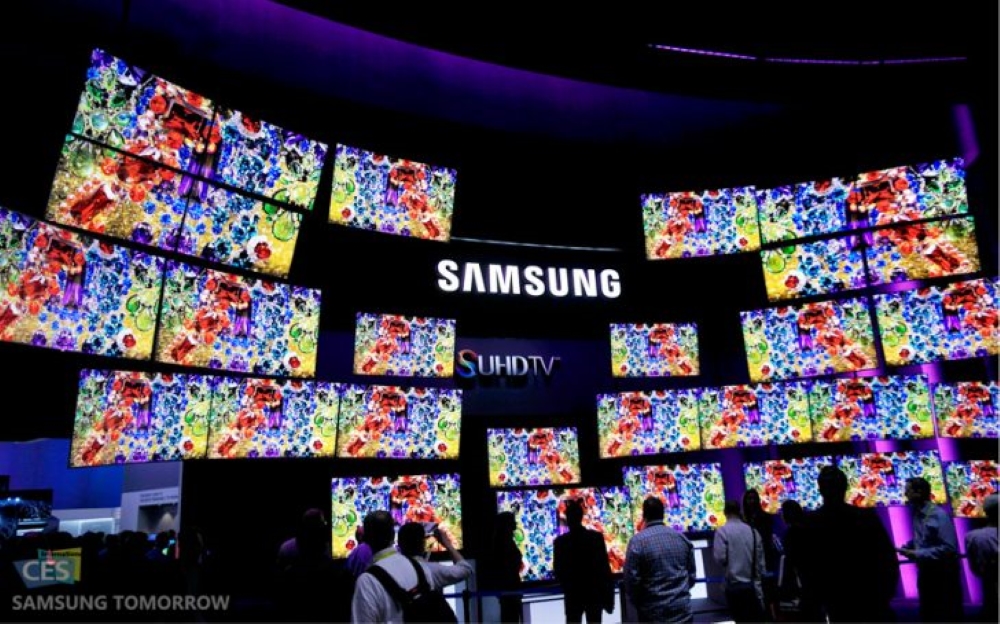
What Sets Quantum Dot TVs Apart: Content, Film Quality and No-Cadmium Technology
The TV industry continues research and development into the commercialization of quantum dots as the material becomes a game-changer in display technology. For that reason, a variety of quantum dot TVs have hit the market recently — offering a wide range of options to customers.
However, key differences in quantum dot TVs lie in how the technology is implemented and the overall quality of the display. To ensure a premium viewing experience, factors such as the amount of quantum dot content, the quality of quantum dot film and the use of no-cadmium materials must be considered.
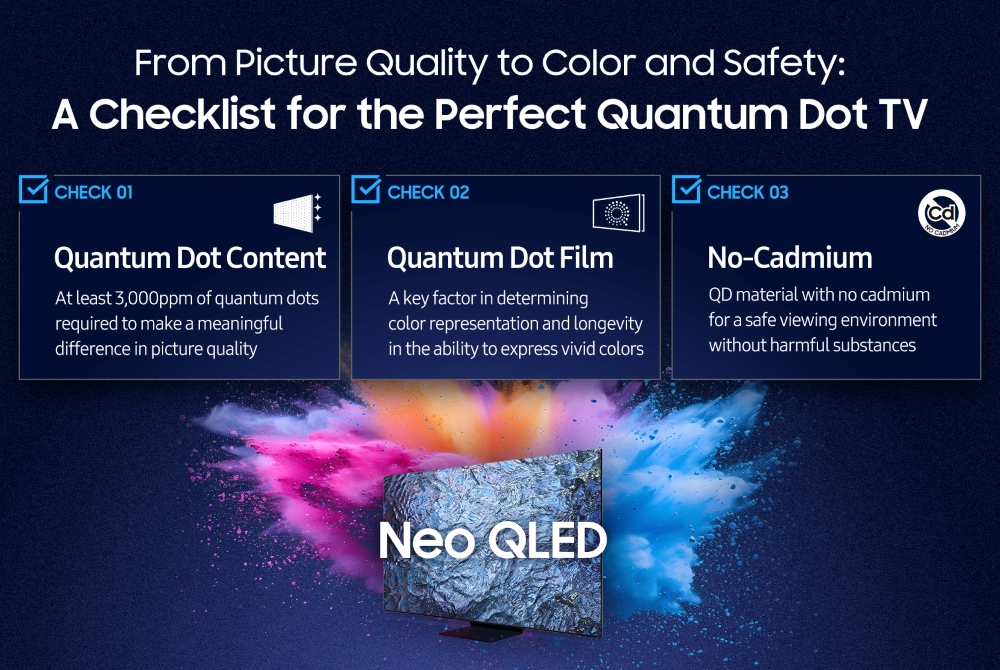
Quantum Dot Content
The true quality of a quantum dot TV is defined by its quantum dot content. The quantum dot film requires a minimum of 3,000 parts per million (ppm) of the material to achieve the vivid, rich picture quality and color expression that only quantum dots can deliver.
Quantum Dot Film
Samsung QLEDs eliminate the need for a separate phosphor layer, enhancing light and energy efficiency while delivering more vivid colors. A quantum dot OLED (QD-OLED), which consists of a thin-film transistor (TFT) layer,1 a self-emitting light source and a quantum dot film that uses the light emitted from the light source, takes a step further enhancing picture quality. In either case, a dedicated quantum dot film that contains sufficient quantum dots is key in delivering top-class picture quality and longevity.
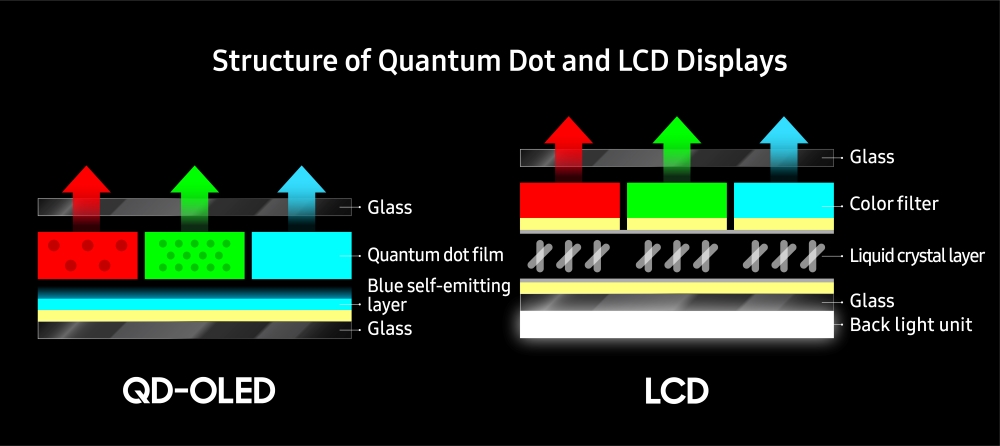
No Cadmium
In the early stages of developing quantum dot TVs, cadmium was essential to achieving the key benefits of quantum dots such as color reproduction and contrast ratio. At the time, cadmium was considered the most efficient material for producing quantum dots.
However, cadmium’s toxicity became a significant obstacle to the commercialization of quantum dot technology. The element posed serious threats to the environment — making its widespread use difficult despite being the most suitable material for implementing quantum dot technology.
In response to this challenge, Samsung developed the world’s first no-cadmium quantum dot material in 2014 and successfully commercialized quantum dot technology with its SUHD TVs in the following year to open a new era of quantum dot TVs.
10 Years of Quantum Dot Innovation and Leadership
Samsung has quickly recognized the potential of quantum dot technology and led innovation in the global display market over the past decade through continuous research and investment.
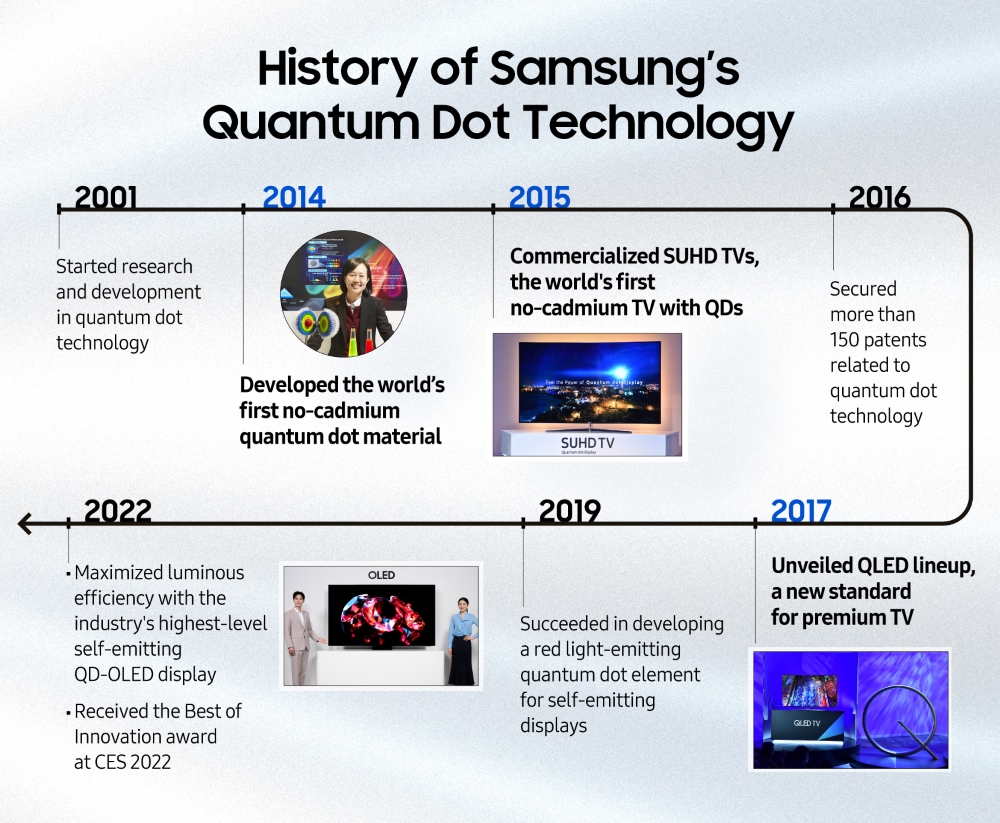
Samsung began researching and developing quantum dot technology in 2001 — at a time when there was limited research on non-cadmium materials. Achieving vivid colors required making the nano-sized particles uniform, but the lack of technology and research made mass production extremely challenging.
Despite these obstacles, Samsung succeeded in creating a no-cadmium nanocrystal material in 2014. Since then, the company has accumulated extensive expertise — registering more than 150 patents — and continuously worked on advancing the technology. Samsung’s long-standing commitment culminated in 2015 when the company unveiled the world’s first SUHD TVs with no-cadmium quantum dot technology.

Samsung’s QLED lineup was revealed in 2017, setting a new standard for premium TVs that overcame the limitations of OLED TVs. By applying metal quantum dot technology, Samsung achieved the Digital Cinema Initiative’s color standard DCI-P3 and achieved 100% color volume for the first time in the world — thereby presenting unparalleled color expression. Notably, the use of inorganic quantum dot technology protected the screens from burn-in2 to ensure consistent picture quality over time.
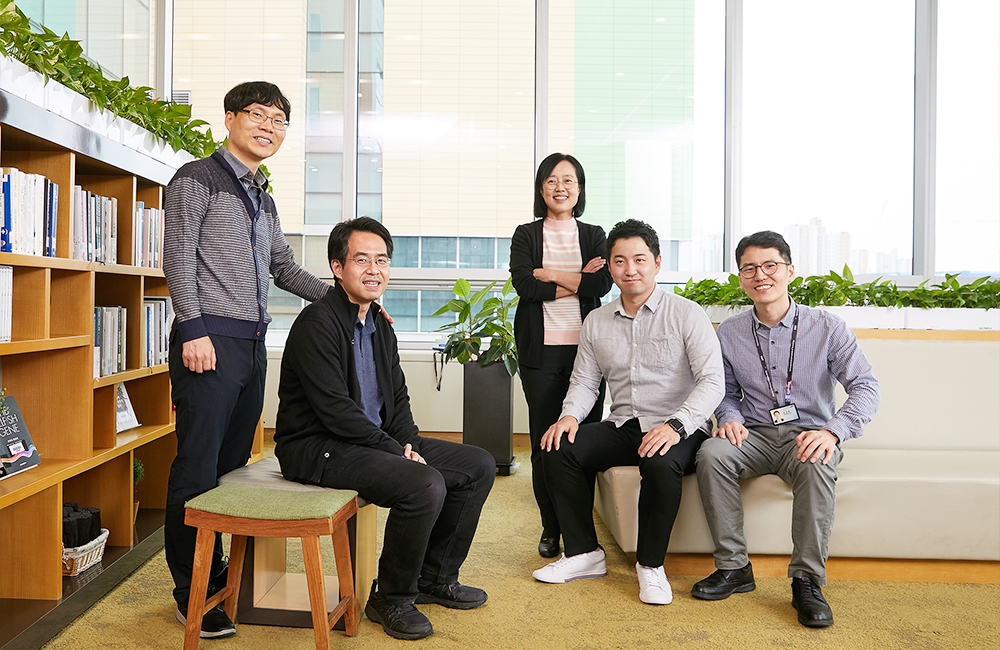
Following its success in developing a red light-emitting element for displays in 2019, the company enhanced the luminous efficiency of blue self-emitting QLEDs — considered the most challenging to implement among the three primary QLED colors3 — to an industry-leading 20.2%.
“Discovering a blue material for self-emitting QLEDs and demonstrating industry-leading performance at the device level were significant achievements of this research,” said Dr. Eunjoo Chang, a fellow at Samsung Advanced Institute of Technology. “Samsung’s distinctive quantum dot technology has once again overcome technical barriers.”
This cutting-edge advancements led to the launch of the QD-OLED TVs, making history at CES 2022 by winning the Best of Innovation award for integrating quantum dot technology and OLED displays.
Samsung remains dedicated to advancing quantum dot technology through continuous innovation. The company continues to invest in leading display technology — from QLED to Neo OLED — by offering high brightness, color accuracy and frequency. Driven by Samsung’s unrivaled quantum dot innovations, the future of display technology is brighter than ever.
(Photo credit: Samsung)
TrendForce 2025 Mini LED Backlight Display Trend and OLED Technology Competition Analysis
Release Date:
PDF (194 Pages)- 28 August 2024
Languages: Traditional Chinese / English
|
If you would like to know more details , please contact:
|

















